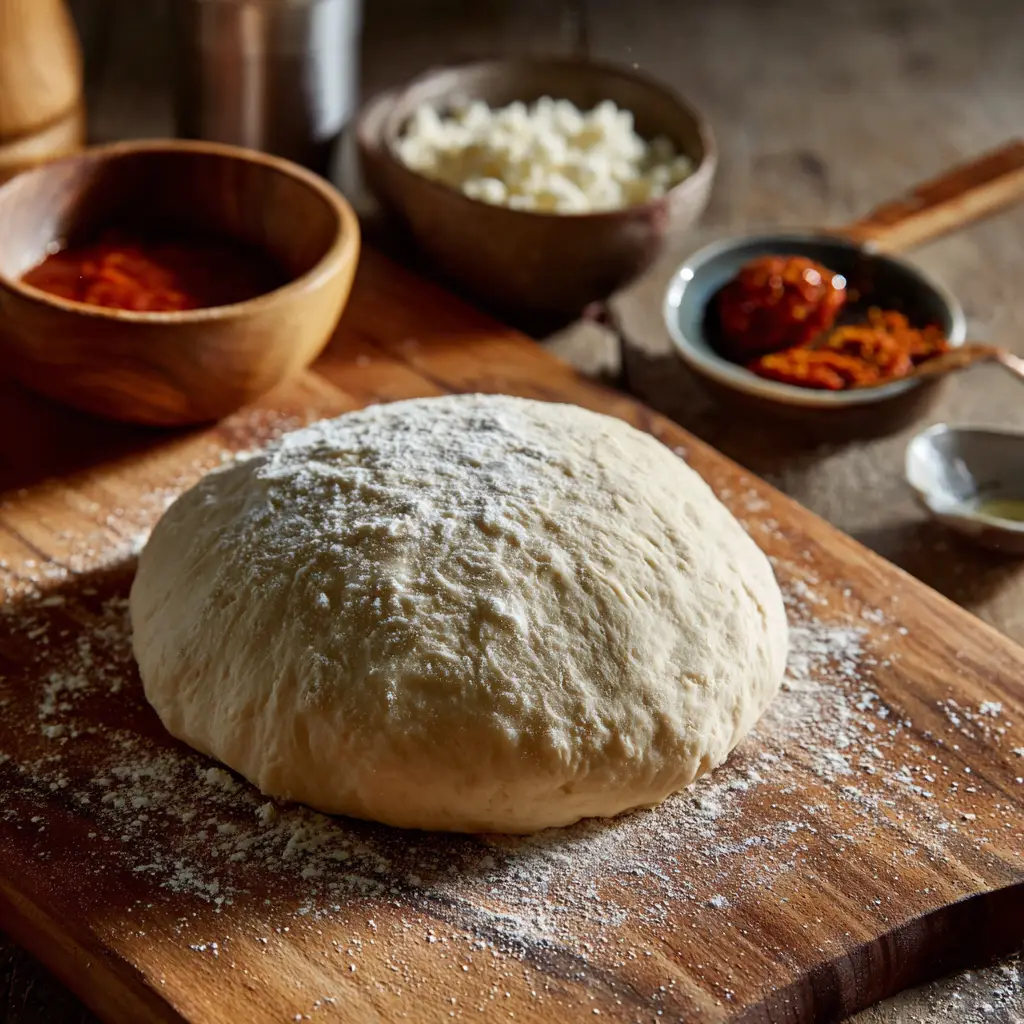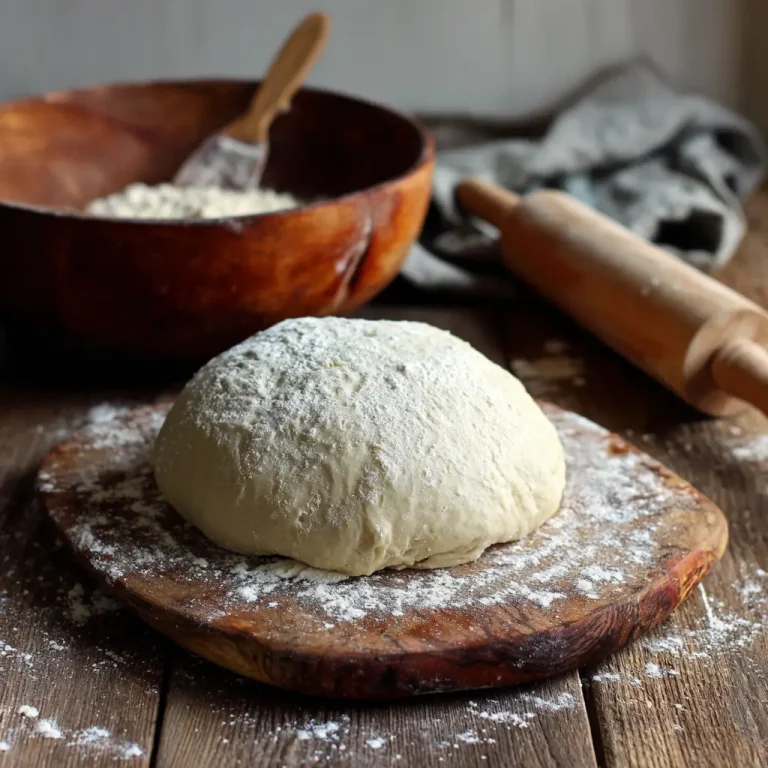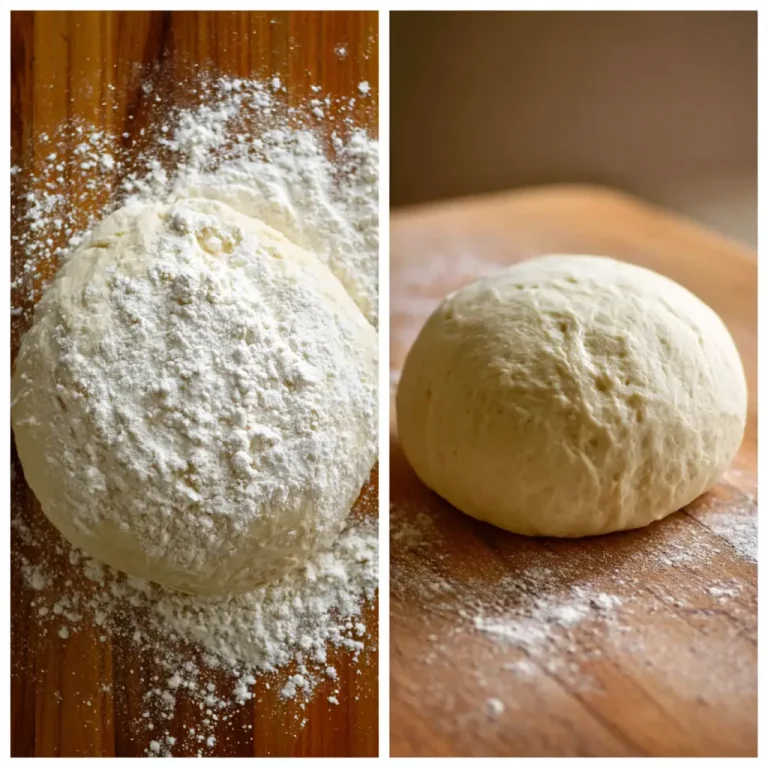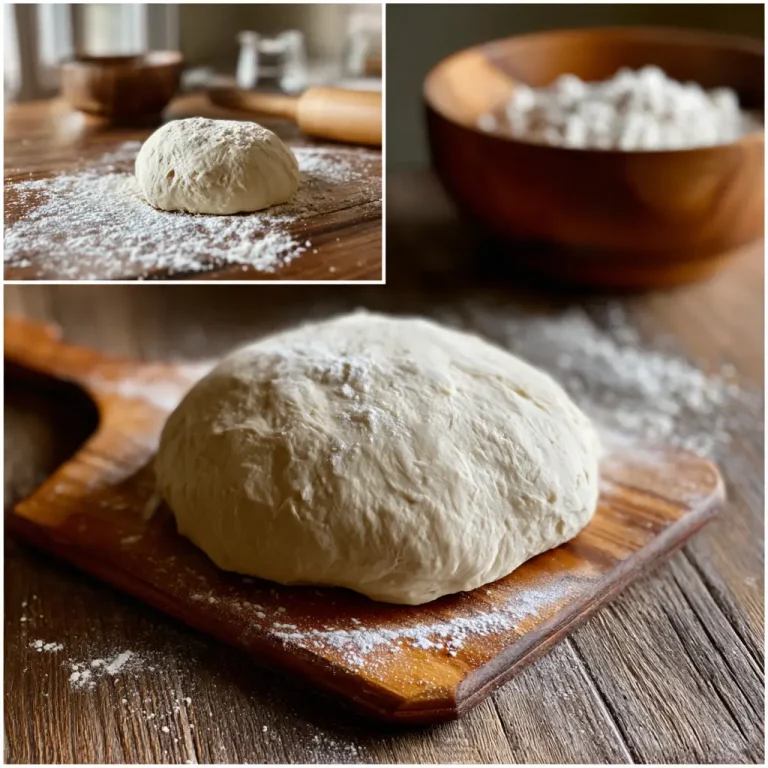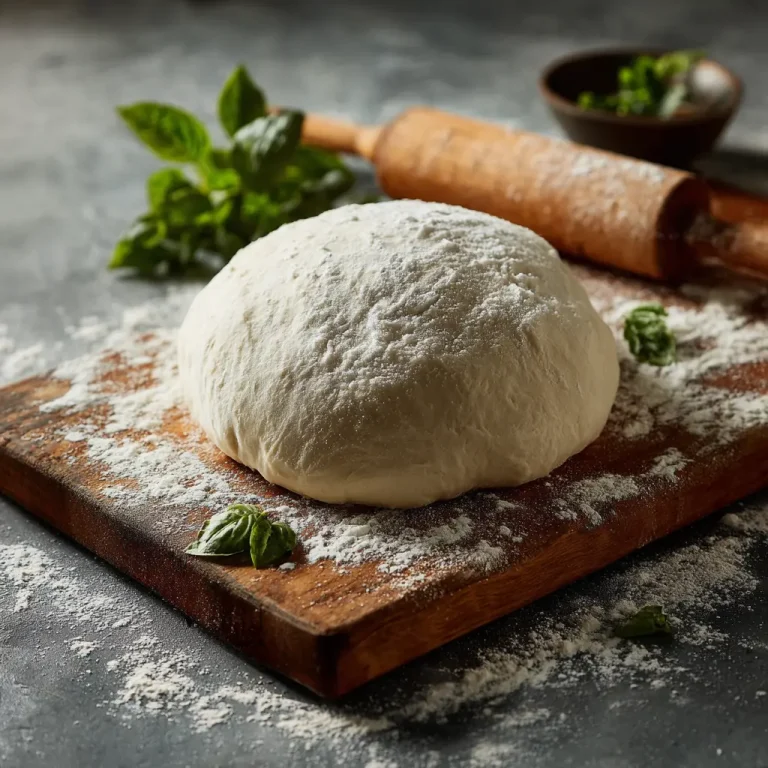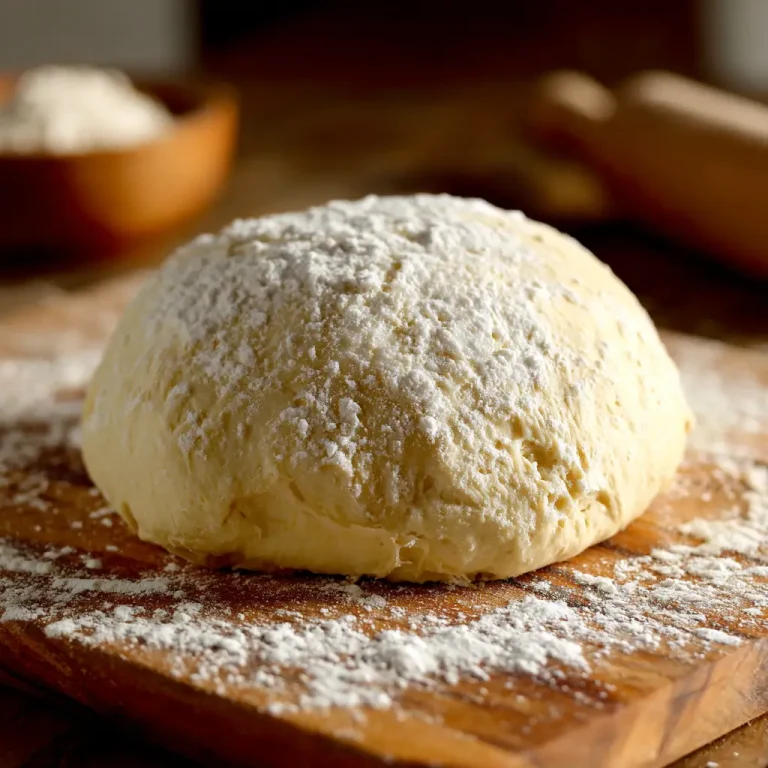Introduction
Creating your own pizza dough from scratch transforms an ordinary meal into something deeply satisfying. The process is simple yet rewarding, producing a soft, airy crust with a touch of crispness on the outside. Nothing beats the aroma of freshly baked dough wafting through the kitchen, especially when you know every ingredient that went into it. Unlike store-bought dough, a homemade version gives you complete control over texture, flavor, and quality.
Many people assume making pizza dough is complicated, but with the right guidance, it becomes a straightforward task. The ingredients are basic and likely already in your kitchen. What truly matters is how you combine and rest the dough to allow the gluten to develop properly. Once you get the hang of it, this recipe becomes your go-to base for all kinds of pizzas—from classic Margherita to spicy chicken or veggie-loaded creations.
This simple pizza dough recipe balances chewiness with a light structure that holds up perfectly under any topping. Whether you prefer a thin crust or a thicker, more rustic one, the flexibility of this dough makes it ideal for every style. Get ready to make pizza nights memorable and delicious with a dough that rivals any pizzeria.
Ingredients Needed
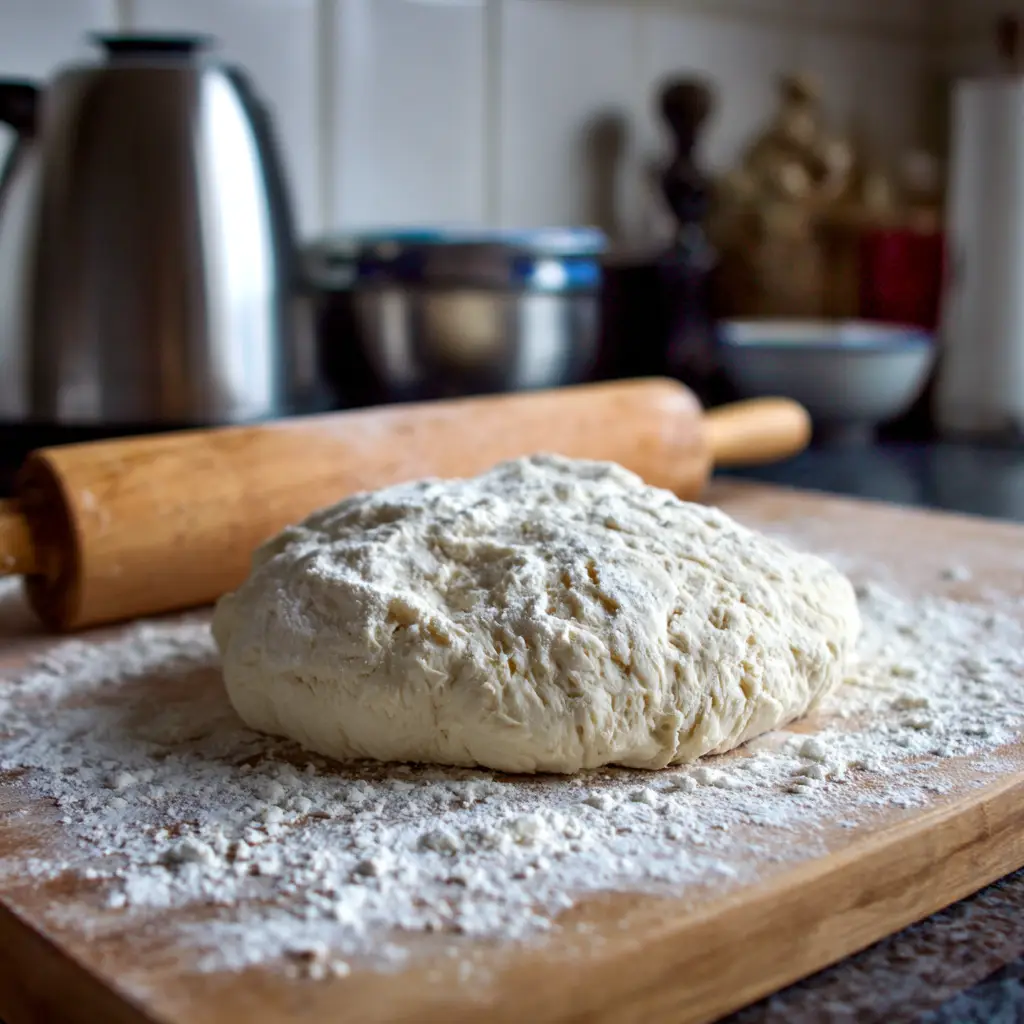
| Ingredient | Quantity | Calories (Approx.) |
|---|---|---|
| All-purpose flour | 3 cups | 1200 |
| Warm water (around 110°F) | 1 cup | 0 |
| Active dry yeast | 2 ¼ teaspoons | 7 |
| Olive oil | 2 tablespoons | 240 |
| Sugar | 1 teaspoon | 16 |
| Salt | 1 teaspoon | 0 |
| Cornmeal (for dusting) | 1 tablespoon | 30 |
The combination of these ingredients forms the base of a perfect pizza crust. Using warm water activates the yeast, while olive oil gives the dough richness and tenderness. Sugar supports the yeast’s activity and helps with browning, and a small amount of salt balances the overall flavor beautifully.
Step-by-Step Cooking Instructions
Step 1: Activate the Yeast
Combine warm water, sugar, and yeast in a bowl. Let it rest for 8 to 10 minutes until it becomes foamy and active.
Step 2: Prepare Dry Ingredients
Mix flour and salt in another bowl to distribute the salt evenly before combining with wet ingredients.
Step 3: Form the Dough
Add the yeast mixture and olive oil to the flour. Stir gently until a sticky dough begins to form.
Step 4: Knead the Dough
Transfer it to a floured surface and knead for 7 to 10 minutes until smooth and stretchy.
Step 5: Let the Dough Rise
Place the dough in an oiled bowl, cover it, and rest it in a warm spot for about an hour.
Step 6: Check for Proper Rise
The dough should double in size and feel soft when pressed gently with your fingers.
Step 7: Punch and Shape
Punch down the dough to release air, then roll or stretch it into your preferred pizza shape.
Step 8: Pre-Bake for Crispness
Bake the plain dough at 475°F for about 5 minutes to prevent sogginess when adding toppings.
Step 9: Add Sauce and Toppings
Spread sauce evenly, sprinkle cheese, and arrange your favorite toppings across the surface.
Step 10: Bake the Pizza
Bake at 475°F for 12 to 15 minutes until golden and bubbling. Let it cool slightly before slicing.
Tips for Customizing the Recipe
A simple pizza dough is like a blank canvas waiting for your creativity. You can tweak this base recipe in countless ways to match your taste and style.
If you love a more flavorful crust, mix in herbs like oregano, thyme, or garlic powder directly into the dough. For extra crunch, replace a small portion of all-purpose flour with semolina flour. Adding a touch of honey instead of sugar can also enhance the dough’s flavor and help it brown more evenly.
Those who enjoy whole grains can substitute half of the flour with whole wheat flour. It adds a nutty flavor and a slightly denser texture that pairs wonderfully with earthy toppings. To make the dough richer, add a spoonful of yogurt or milk during mixing. It gives a soft, tender interior while maintaining a crisp exterior once baked.
If time allows, refrigerate the dough overnight. Slow fermentation deepens the flavor and improves elasticity, making it easier to stretch and shape the next day.
Nutritional Information
Each serving of pizza dough (based on 1/6 of the total recipe) approximately contains:
- Calories: 250
- Protein: 6g
- Carbohydrates: 45g
- Fat: 6g
- Fiber: 2g
- Sugar: 1g
- Sodium: 200mg
Keep in mind that these values only reflect the dough itself. Once you add sauce, cheese, and toppings, the nutritional content will change depending on your ingredients.
Serving Suggestions
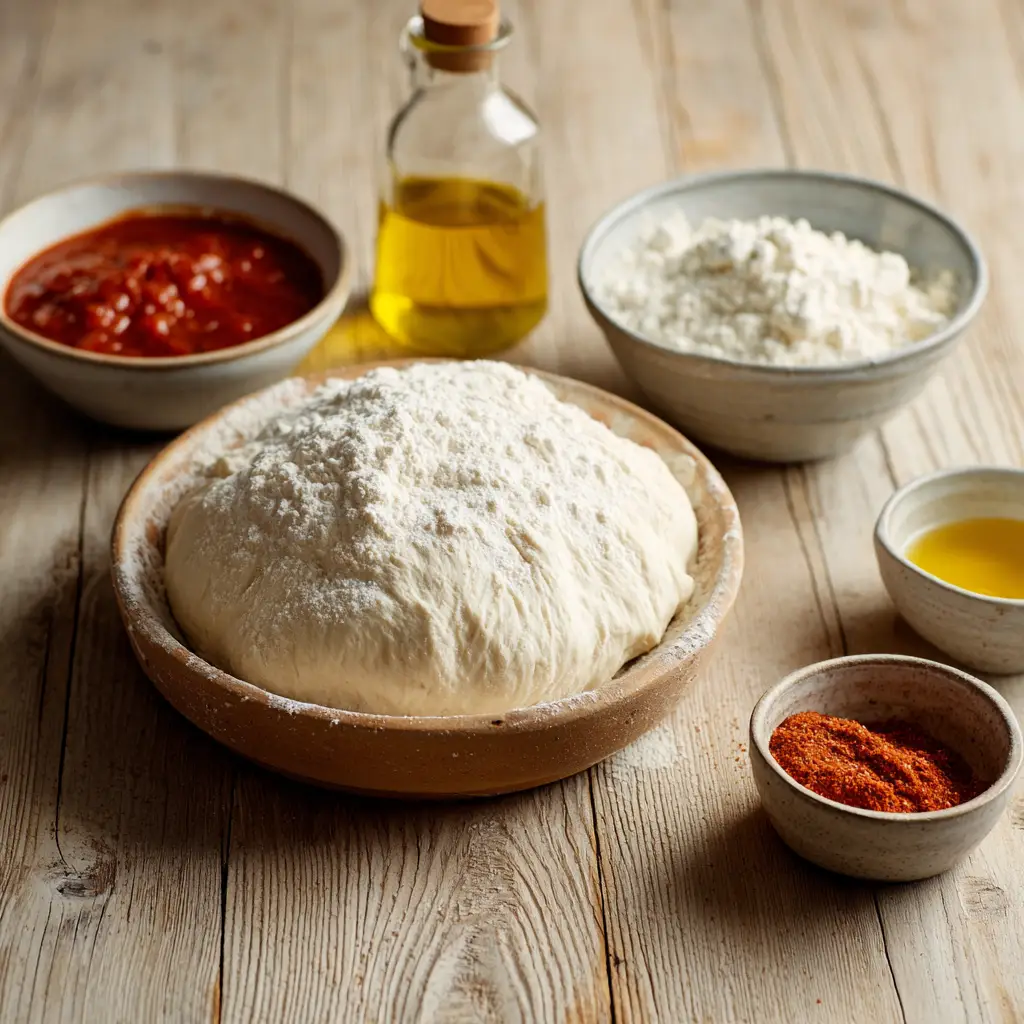
Homemade pizza dough opens up endless possibilities for creative meals. You can use it for a classic pizza topped with tomato sauce, mozzarella, and fresh basil. For a lighter twist, try topping it with olive oil, garlic, and thinly sliced vegetables. It also works beautifully for white pizzas made with ricotta and spinach.
Beyond pizza, this dough can be used for calzones, garlic bread, or even mini flatbreads for appetizers. Bake smaller rounds and serve them as a base for dips or spreads. It’s also perfect for grilled pizzas—just brush the crust with olive oil, grill each side for a few minutes, then add toppings and finish cooking until the cheese melts.
If you’re serving guests, prepare several dough portions in advance and let everyone create their own personalized pizzas. It turns dinner into an interactive and enjoyable experience for all ages.
Conclusion
Making pizza dough from scratch is more than just cooking—it’s an act of creativity and comfort. The smell of yeast working its magic, the feel of soft dough under your hands, and the sight of a perfectly baked crust coming out of the oven make the effort worthwhile. Once you experience the taste of a pizza made from your own dough, store-bought versions will never feel the same again.
With this simple pizza dough recipe, you can turn any ordinary evening into something special. Whether it’s a weekend treat or a quick weekday dinner, a homemade pizza always brings joy to the table. The next time a craving hits, remember that the best pizzas start with dough made by hand, in your kitchen, with love and care.

